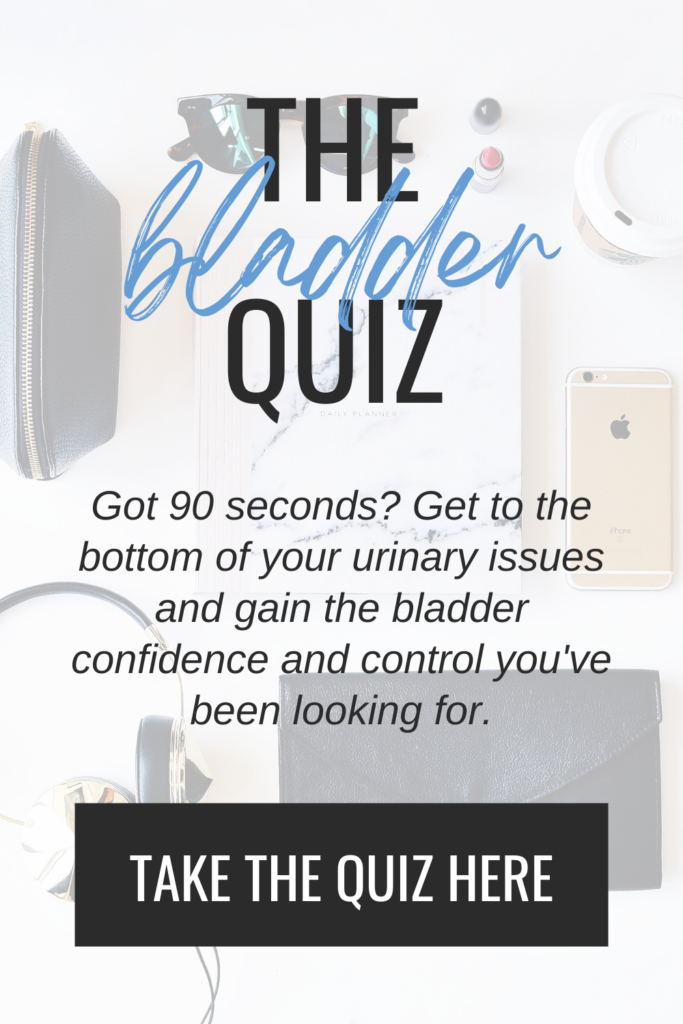Kegels get all the hype when it comes to pelvic floor health, but I tend to lean *a bit* in the opposite direction and find myself preaching the importance of relaxing the pelvic floor muscles much more often instead.
I tend to take the path less traveled— I’d rather thrift for my home décor than flip through a west elm catalogue. Small boutiques call my name far louder than mega mall department stores. New restaurant just opened? Cool…I’ll check it out in a year when it’s a little less crowded.
So it’s no shocker that my approach to pelvic floor health is different than what you’ll read in the latest volume of Vogue.
While the idea of relaxing the pelvic floor muscles maaaaaay seem counter-intuitive to what you’d expect, especially when it comes to things like leakage and prolapse, I’m here to tell you why it’s the number one thing I prescribe in my pelvic rehab clinic, and I’m convinced that this approach is why my patients see such amazing results.
It’s a common misconception that the pelvic floor muscles should be tight. But if any other muscles in the body were tight, it would be a problem, right?!? Think of it like a fist. Your hand should not be stuck in a fist. You should be able to make a fist, but walking around with your hand clenched would not only be useless, but it would also start to hurt.
Making a fist 24/7 is like a tight pelvic floor. The muscles can’t function properly and they will eventually start to hurt. Hello pelvic pain, constipation, leakage, prolapse, and just about every other pelvic floor issue under the sun. Because tight does not mean strong and tight does not mean pleasure.
In fact, if often means the opposite.
As a woman with endometriosis, I’m more susceptible to my pelvic floor muscles being tight. Those with ovarian cysts, back and hip pain, a history of urinary issues, and a past with trauma or abuse also fall into this category with me. So what are girls like you and I to do?
Keep reading for the ~little things~ I do [just about] every day to make sure my pelvic floor is relaxed. And if you want even more detail, I have a free guide with all the deets on how to relax the pelvic floor here.
2 MINUTES OF STRETCHING
If the hip and back muscles are tight, it’s likely that the pelvic floor muscles have followed suit, especially since some of them are literally connected. It’s impossible to stretch the actual pelvic floor because it sits in a ring of bone, but stretching the muscles that sit juuuuuust outside that ring can make a big difference.
The piriformis and obturator internus are the two main muscles I like to target. Stretch both legs for 30 seconds twice, twice a day.


3 SECOND PELVIC FLOOR RELAXING TECHNIQUE
Sometimes Often times the pelvic floor muscles are tight and we don’t even know it. It’s kind of like when you catch yourself clenching your jaw or find your shoulders shrugged up by your ears. Awareness of your tight muscles (and then knowing what to do about them) is the number one thing I’ve found to be effective in getting the muscles to relax.
It’s a two-step process that [no joke] takes less than 3 seconds from your day.
1. Find your muscles. I recommend doing a mini kegel (or pelvic floor contraction) to send the message to your brain saying “these are the muscles I want to relax”.
2. Let the muscles go. Drop, release, open the kegel and let your muscles fall downward. NOTE: This is not pushing! It’s simply relaxing. Also know…the excursion isn’t anything crazy, so you won’t feel a drastic change. But something should feel *different*. To me, it feels like a relief in pressure.
Perform this ~about~ once an hour to check in, with the goal of making a relaxed pelvic floor your new normal and improving your awareness of this area. You may want to check in even more regularly if you’re in pain, stressed, or have been sitting or standing for a long time. This can be done during intercourse to relieve pain, before a bowel movement to help with constipation, and even brith!
3 MINUTES OF PISTON BREATHING
Piston breathing is a technique that uses the diaphragm, abdomen, and pelvic floor to breathe properly. It’s called piston breathing because the diaphragm and pelvic floor muscles move up and down together like a piston in a car.
When you inhale, the lungs fill with air causing the diaphragm to descend. The abdomen and ribs will both expand and the pelvic floor will lower as abdominal cavity pressure changes. As you exhale, the opposite happens. The pelvic floor lifts with the diaphragm and the ribs and abdomen return.
If these muscles are moving with every breath you take, your pelvic floor is more likely to be relaxed.
While sitting or laying on your back, place one hand on your chest and one hand on your abdomen and see if you can feel the rhythmic rise and fall of the diaphragm, core, and pelvic floor. (Remember…the excursion of the pelvic floor isn’t huge; the movement you feel will be slight). Perform this for a few minutes at night before falling asleep. Once you get the hang of it, start incorporating this into your commute, mealtimes, workout breaks—honestly, there’s no bad time to breathe properly.
5 MINUTE YOGA FLOW
Yoga is something I recently picked up and I’m loving it. The CrossFitter inside me doooeeesssss get a little bored, but the way I feel afterwards is nothing short of magic.
Every yoga pose can ultimately be used to relax or strengthen the pelvic floor, it just depends on how you time your breathing (see my guidance on piston breathing above). Breathing in during a certain part of a pose will accentuate the relaxation of the pelvic floor.
Here’s my favorite morning flow—
~ 5 deep piston breaths in sitting
~ 5 deep piston breaths in sitting, raise arms overhead on the inhale and picture the butt bones spreading apart, lower arms on the exhale
~ 5 alternating between hands and knees to child’s pose, inhale as you lower into child’s pose and picture the butt bones spreading apart, exhale on the return to hands and knees
~ 5 alternating between cat and camel, inhale as you lower your spine and abdomen towards the floor and picture the butt bones spreading apart, exhale as your round your spine towards the sky
~ 5 alternating between plank and down dog, inhale as you lift into down dog and picture the butt bones spreading apart, exhale on the return to plank (you can also go from hands and knees to down dog if plank is too challenging)
2 SECOND POSTURE CHECK
Posture plays a huuuuuge role in how so many body systems work and function, and the pelvic floor muscles fit nicely into that general rule too. [Maybe my mom was right to correct me every 5 minutes as a kid???] Sitting or standing in a posterior pelvic tilt (tail tucked) causes the glutes, core, and pelvic floor muscles to shorten. On the opposite end, posturing in an anterior pelvic tilt (sticking your butt out the back) causes the glutes, core, and pelvic floor to lengthen, but this also isn’t good for prolonged periods.
That neutral sweet spot, with the hips, shoulders, and ears all aligned, is *right* where our pelvic floor wants to be and it’s that perfect not too hot, not too cold, but just right place for relaxed but strong muscles.
Find a little cue that reminds you to check in throughout the day— the annoying email ping, vibrating text alert, or inevitable glance at the clock have all been affective reminders for me.
If you’ve been doing the math, then all of these little tricks will take a total of about 15 minutes from your day (assuming you do the posture check and pelvic floor relaxation trick once an hour *nudge nudge*). These small acts make a big difference in pelvic floor awareness, strength, and control, and the results I see patient after patient, and in my own pelvic floor health, are proof that this works.
Now it’s your turn! Less leakage, decreased pain, easier bowel movements…it is possible and ~this~ is where I recommend starting. Make sure to grab your free guide with all of the above in one, simple, easy to print document and take yourself another step closer to a happy and healthy pelvic floor.
-Amanda
Disclaimer: The content provided here does not constitute medical advice, nor is it a substitute for personalized healthcare. If you have concerns about a medical condition, diagnosis, or treatment, you should consult with a licensed healthcare professional to discuss your individual needs.
















